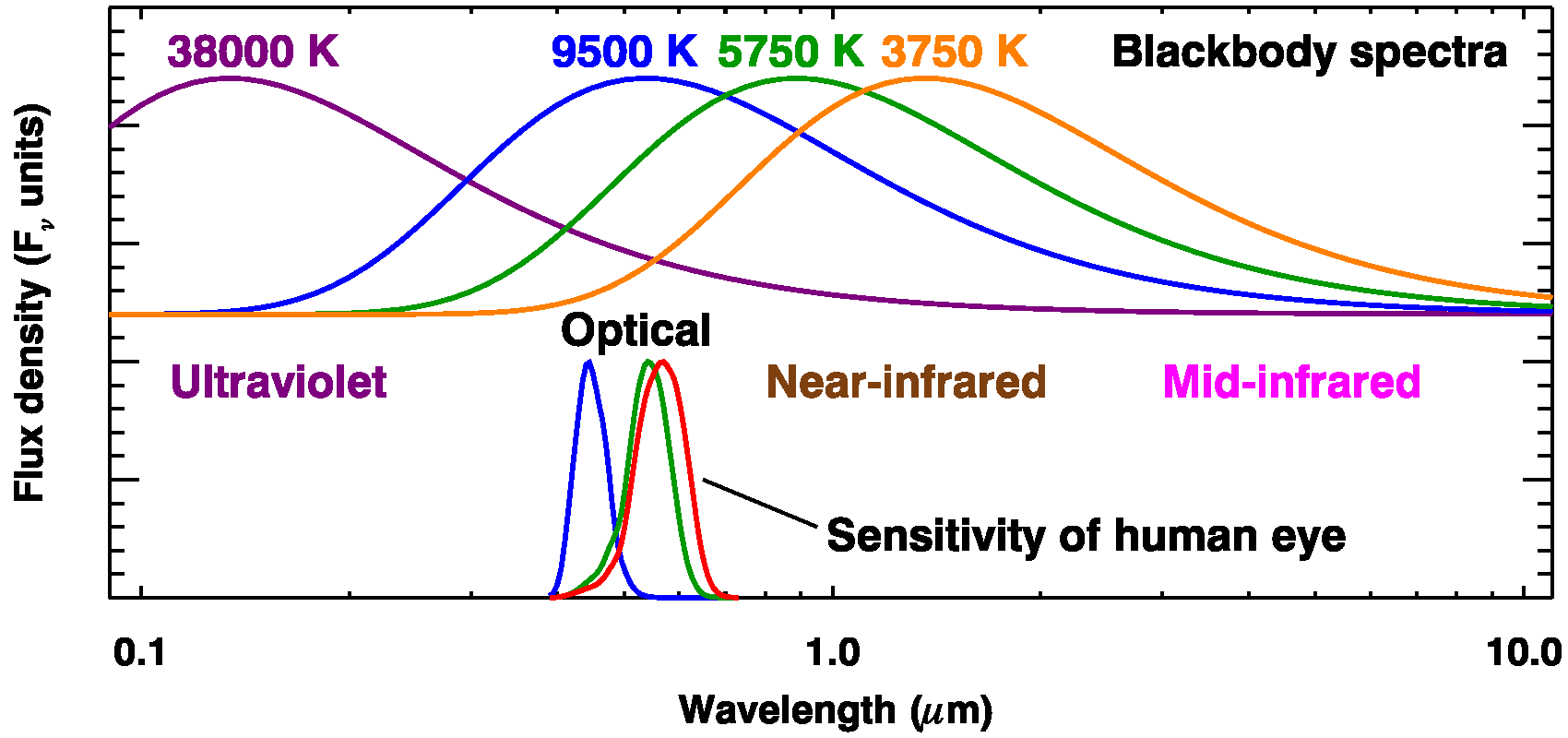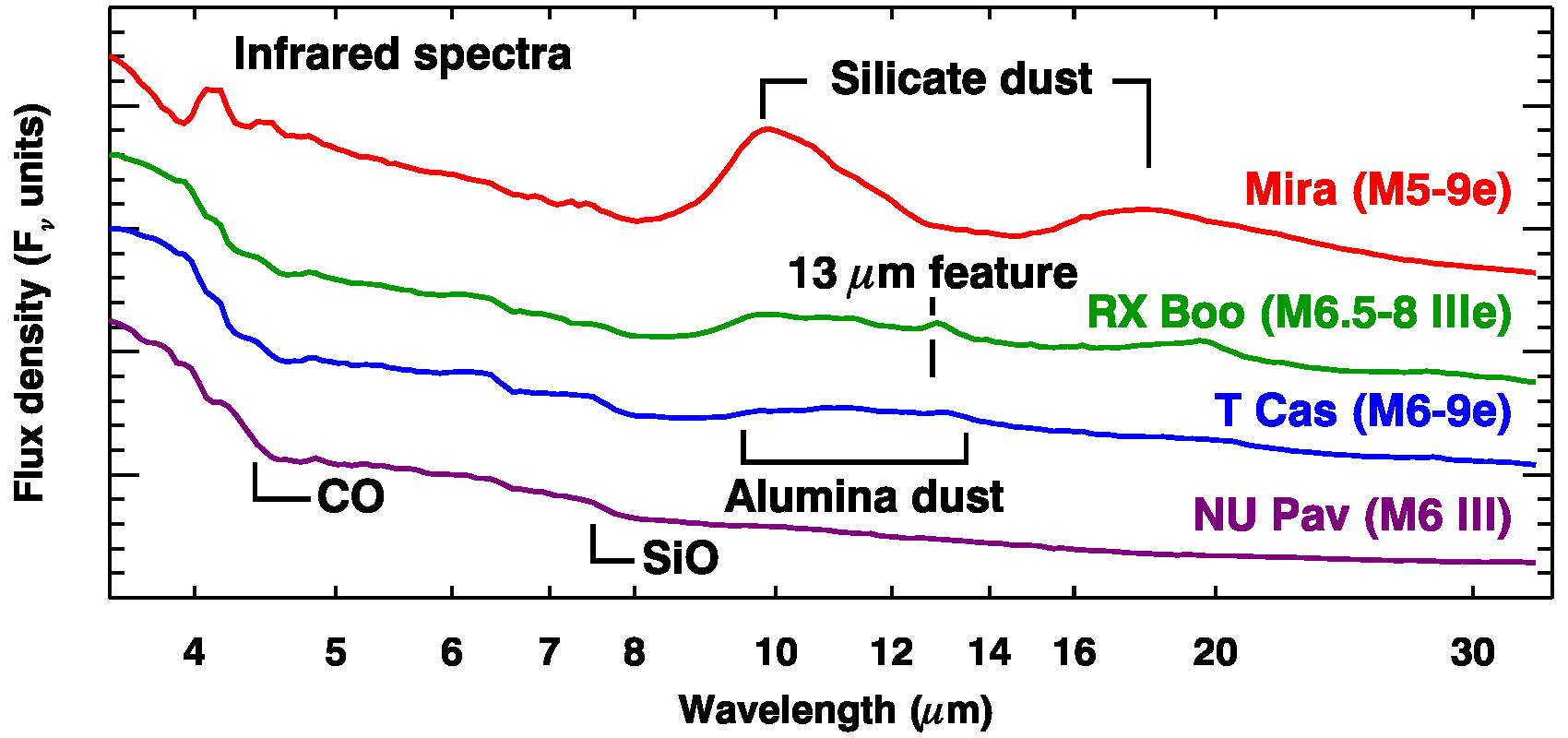The electromagnetic spectrum
Light can be thought of as particles or waves. When light
behaves as a particle, we say that it consists of photons. When
light behaves as a wave, then it's an electromagnetic wave, with
an electric field and a magnetic field, both of which vary in
strength just like a wave in the ocean varies in height. If you
change the wavelength of light, you change its color. Most of
the colors light can take are completely invisible to us, because
our eyes can see only a small range of wavelengths.
Optical light, that is the part we can see, can vary from
red, which has the longest wavelengths, to blue and then purple,
which has the shortest wavelength. Roughly, red light has a
wavelength of about 700 nanometers (nm). One nanometer is one
billionth of a meter. I like to write wavelengths in micrometers,
usually referred to as "microns" (or µm). Then, red light is
at about 0.7 µm. At the other end of the spectrum is purple,
at about 0.4 µm.
If we keep going to shorter wavelengths, we hit ultraviolet, then
X-rays, and finally gamma rays. Photons with shorter wavelengths
pack more energy. That's why the medical technician is so careful
with all the lead shielding when taking X-rays: they're dangerous.
Gamma rays are even more dangerous, and a strong dose of those will
kill you quickly. Even UV isn't safe, as anyone who has had a bad
sunburn knows. And of course, there's skin cancer, too.
The other side of the spectrum, if we keep going past red, is
of more interest to me, because those are the wavelengths where
I've done most of my astronomy research. First we come to the
infrared, which I like to break up into the near infrared, which
is from about 0.7 to 3 µm, then the mid or thermal infrared,
from about 3 to 30 µm. Beyond that, you're in the far
infrared, until you get to wavelengths of a few hundred µm.
Since 1000 µm = 1 mm, astronomers refer to that region of the
spectrum as the sub-millimeter. Keep going, and you're in the radio
regime.

|
|
Most objects emit roughly (very roughly) as blackbodies. The
idealized blackbody absorbs every photon that hits it, which is
why it's called "black", and it re-emits the energy it absorbs at
all wavelengths. The re-emitted spectrum depends on the
temperature of the blackbody, with hotter objects emitting more
high-energy photons, which are those with the shortest wavelengths,
and cooler objects emitting more at longer wavelengths.
The figure above shows blackbody curves for four temperatures:
38,000 K, which is a really hot star (spectral class B0 V), 9,500 K,
which is close to the temperature of Vega (A0 V), 5,750 K, close
to the temperature of the Sun (G2 V), and 3,750 K, a red giant
(M0 III). (On the Fahrenheit scale, these are 68,000, 16,600,
9,900, and 6,300 degrees).
Also shown are the response curves for the human eye, to give
an idea of which part of the spectrum the eye can see. The hottest
star plotted emits most of its radiation in the ultraviolet and
even shorter wavelengths. The coolest star emits mostly in the
near-infrared.
|
Last modified 29 December, 2014. © Gregory C. Sloan.



